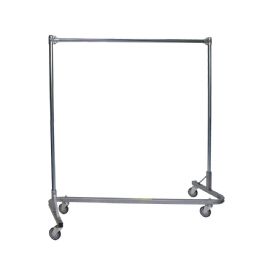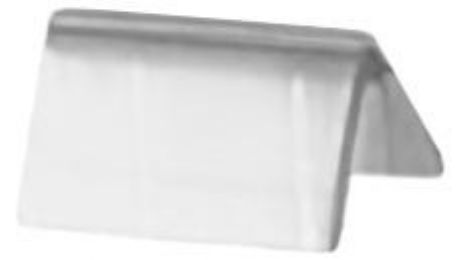
~25.jpg&newheight=260&quality=80)



What are Commercial Garment Racks?
Garment racks, also referred to as portable clothes racks, are specifically constructed to organize, hold and transport hanging clothing. They may also contain bins or drawers for folded garments and other clothing accessories. Available in a wide variety of styles and sizes, garment racks are handy organizational tools to keep clothing neat and clean, while they also offer the convenience of easy portability.
Unlike their flimsier counterparts sold in stores, commercial-grade garment racks are designed for the heavy and repetitive usage that these racks are generally subjected to in hospitals, long-term care facilities, laundries and other institutional workplaces. Made with higher-gauge metals and tough PVC plastics, commercial garment racks are highly durable to withstand years of constant use and abuse.
While commercial garment racks are more often used for industrial or institutional clothing storage and transportation, individual consumers also often utilize them at home for garment storage and organization, as well.
How to Choose the Best Commercial Garment Rack
Because they are specifically designed for easy portability and durable construction, commercial garment racks offer a variety of features and options to better suit every unique workplace. Choosing the best commercial garment rack for your facility is dependent upon what your facility’s particular requirements may include.
Knowing what options are available will help determine what kind of garment rack is best:
Size—the height, width and weight capacities of garment racks vary, so it is important to determine usual working weights of the clothing to be stored and/or transported, along with the heights and widths of doorways that the racks must fit. Some racks offer height adjustability.
Stacking—several garment rack designs offer stacking capabilities, and are called stack racks. This simply means that they can be stacked together more closely with other stack racks, saving storage space.
Hanging Bars—choose from a variety of crossbars and other hanging bars to more specifically fulfill unique hanging requirements.
Baskets, Bins and Shelves—some garment rack designs include baskets, bins or shelves to hold folded clothing, garment accessories and shoes. These configurations feature a hanging bar along with the shelving or baskets, so they can hold both folded and hanging clothing.
Wheels—most commercial garment racks highlight larger rolling caster wheels for the easiest rolling and maneuvering, along with locks to keep the unit in place when it is not in transport. Look for casters that are also non-marking so they will help to keep floors intact.
Covers—as an available feature or option, garment rack covers are a must-have to keep the clothing as clean and sanitary as possible, while it also protects the garments from inclement weather when the rack must be transported in outside environments.
Fabrics and Frame—garment rack frames are durably constructed with heavier-gauge metals and PVC plastics, some of which also include antibacterial qualities. Other parts of the design may include fabrics such as mesh for a lighter weight rack. Most racks offer a selection of colors to better suit the facility’s existing décor.
Clothes Dividers—clothing dividers help to keep multiple patients’, residents’, or customers’ clothing separate and organized, which makes clothing delivery more streamlined and efficient.
Linen Cart Bags—as a handy optional feature, linen cart bags can be attached to any garment rack to assist in carrying other items.
Rehabmart is pleased to offer superior quality garment racks from such esteemed and well-known vendors as R & B Wire Company, IPU and Graham Field.
Hulet Smith, OT
Rehabmart Co-Founder & CEO
ck